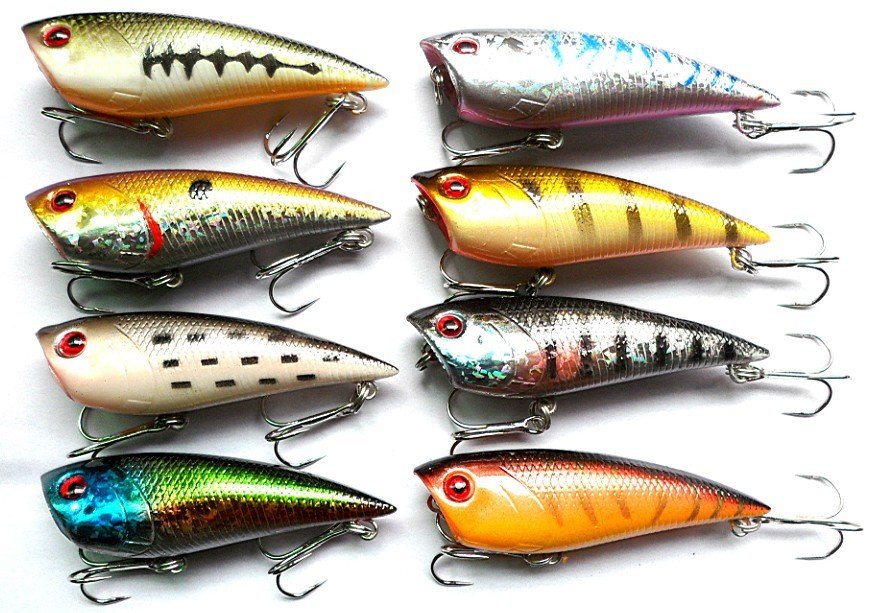Discount Fishing Lures Details
In early times, fishing lures were made from bone or bronze. The Chinese and Egyptians used fishing rods, hooks, and lines as early as 2,000 B.C. though most of the first fishermen used handlines. The first hooks were made out of bronze which was strong but still very thin and less visible to the fish. The Chinese were the first to make fishing line, spun from fine silk. The modern fishing lure was made commercially in the United States in the early 1900s by the firm of Heddon and Pflueger in Michigan. Before this time most fishing lures were made by individual craftsman. Commercial-made lures were based on the same ideas that the individual craftsmen were making but on a larger scale.
The fishing lure is either tied with a knot, such as the improved clinch knot, or connected with a tiny safety pin-like device called a "swivel" onto the fishing line which is in turn connected to the reel via the arbor. The reel is attached to a rod. The motion of the lure is made by winding line back on to the reel, by sweeping the fishing rod, jigging movements with the fishing rod, or by being pulled behind a moving boat (trolling). exceptions included are artificial flies, commonly called flies by fly fishers, which either float on the water surface, slowly sink or float underwater, and represent some form of insect fish food.
In early times, fishing lures were made from bone or bronze. The Chinese and Egyptians used fishing rods, hooks, and lines as early as 2,000 B.C. though most of the first fishermen used handlines. The first hooks were made out of bronze which was strong but still very thin and less visible to the fish. The Chinese were the first to make fishing line, spun from fine silk. The modern fishing lure was made commercially in the United States in the early 1900s by the firm of Heddon and Pflueger in Michigan. Before this time most fishing lures were made by individual craftsman. Commercial-made lures were based on the same ideas that the individual craftsmen were making but on a larger scale.
The fishing lure is either tied with a knot, such as the improved clinch knot, or connected with a tiny safety pin-like device called a "swivel" onto the fishing line which is in turn connected to the reel via the arbor. The reel is attached to a rod. The motion of the lure is made by winding line back on to the reel, by sweeping the fishing rod, jigging movements with the fishing rod, or by being pulled behind a moving boat (trolling). exceptions included are artificial flies, commonly called flies by fly fishers, which either float on the water surface, slowly sink or float underwater, and represent some form of insect fish food.
Discount Fishing Lures
Discount Fishing Lures
Discount Fishing Lures
Discount Fishing Lures
Discount Fishing Lures
Discount Fishing Lures
Discount Fishing Lures
Discount Fishing Lures
Discount Fishing Lures
Discount Fishing Lures
Discount Fishing Lures
Discount Fishing Lures












No comments:
Post a Comment